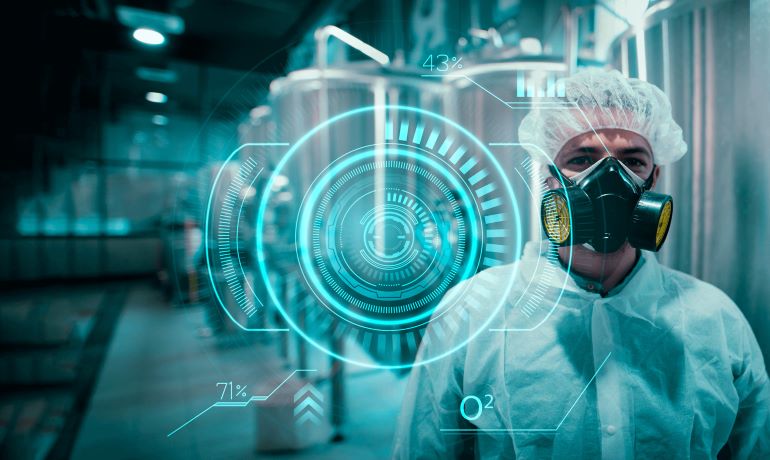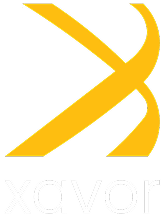
Manufacturing companies face constant pressure to recruit skilled workers, improve supply chain performance, adopt new technologies, and increase ROI. Computer vision technology can really help manufacturing companies achieve all of these goals. It enables them to establish safe working conditions for their workers, thus reducing employees’ health-related costs.
The amount spent on ensuring workers’ well-being significantly impacts a company’s budget and undermines its ability to invest in new ventures. Businesses spend a whopping $170 billion a year on costs associated with occupational injuries and illnesses and these expenditures come straight out of the company’s profits (OSHA).
An unsafe workplace environment severely impedes workers’ productivity levels. Since workers are unable to realize their full potential with compromised safety, it can directly affect your company’s ROI. In fact, lost productivity from injuries and illnesses costs companies $60 billion each year (OSHA). Production delays also compromise your relationship with your customers and negatively affect your reputation.
Ensuring workplace safety should be the number one concern for manufacturers. But the real question is how can you safeguard your workplace while staying on budget. An automated computer vision-based industrial monitoring system is the silver bullet.
Not only does it help eliminate risks, but it also ensures your company’s OSHA compliance and helps avoid hefty fines.
Here are 5 ways computer vision can keep your factory floor secure.
Detecting Spillage of Hazardous Materials
Workers in a production facility handle different kinds of hazardous materials daily. This puts them at constant risk of developing several health hazards, such as permanent damage to DNA and living cells or evisceration in case of spillage.
Computer vision can help prevent health hazards by detecting hazardous material spills in real-time. The system will immediately detect a spill and send an alert.
You can then ask your workers to evacuate that area and take appropriate measures to control the situation. This will considerably reduce health risks without compromising worker productivity.
Detecting Unauthorized Personnel
Even if you have a reliable security system in place, there are many ways for unauthorized workers to gain access to these areas. Some of the most common ones include tailgating, weak doors, and hacked smart cards. Accessing such an area can result in serious injuries or accidents.
Computer vision can effectively resolve this problem. Each time a worker enters unauthorized territory, the system immediately detects them and sends alerts so that the worker stays out of that area.
Hence, the chances of workplace accidents will be significantly minimized.
Monitoring (Worker) Location
Handling dangerous machinery and transporting heavy goods on the factory floor also threaten workers’ safety. If a fairly large production facility does not have the appropriate monitoring mechanisms in place, the risk can multiply.
Through computer vision, you can keep track of your workers’ whereabouts in real time. If a worker is about to handle dangerous machinery or transport heavy goods, you can take timely measures to ensure their safety.
Through AI-based monitoring, you can also determine whether the worker has returned in time after the break or not. If the latter is the case, you can send someone to check up on this particular worker’s safety.
Detecting Safety Gear
Not wearing the recommended safety gear at the workplace exposes workers to various kinds of diseases, chemical burns, electric shocks, cuts, and punctures. However, manually tracking workers’ safety gear compliance can be both costly and difficult.
On the other hand, a computer vision-based innovative safety gear detector can detect PPE with high accuracy and low response time. In a single shot, a bounding box will ensure the presence of the PPE. In case the PPE is not present, the detector’s algorithm will generate alerts and send them to workers to make them comply with the safety regulations.
Automating Attendance
One of the most common reasons for the spread of diseases in the workplace is multiple contact points. Even if these contact points are frequently disinfected, the possibility of transmission can’t be fully eliminated. So, production facilities should have minimal contact points for maximum protection.
A facial recognition-based attendance system can significantly minimize the need for contact points. It can do so by marking worker attendance from a safe distance. By ensuring zero contact, you can prevent the spread of dangerous diseases. An automated attendance system can save worker’s time and boost productivity by offering the following benefits:
- Register a worker quickly on a GPU-based system
- Manage the record of attendance information
- Minimize the chances of proxy
Conclusion
An industrial monitoring system based on computer vision provides you with a virtual map to effectively analyze your factory floor area. You can use it to take adequate safety measures to protect your workers against potential hazards.
From detecting hazardous material spills to tracking workers’ whereabouts in real-time, Xavor has the capabilities and expertise to meet the manufacturing industry’s monitoring needs.
Xavor has been delivering quality AI/ML services to its customers for the past 25 years. Get in touch today and level up your industrial monitoring with artificial intelligence.
